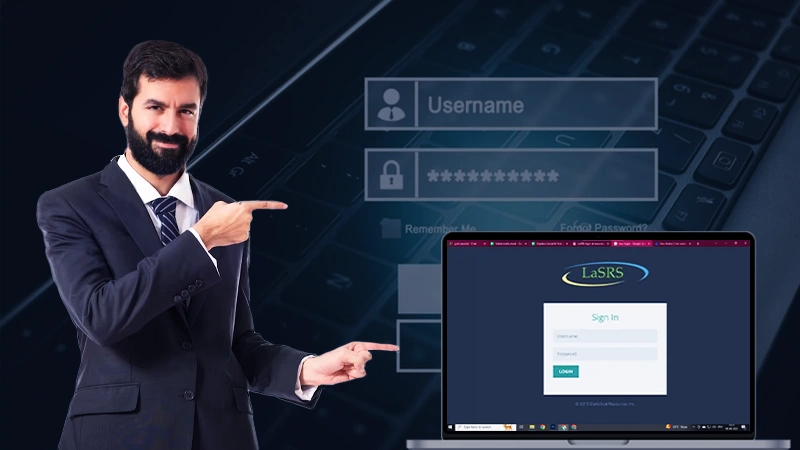lasrs login The Louisiana Statistical Reporting System (LASRS) serves as a pivotal tool for healthcare providers in Louisiana, facilitating the management of Home and Community-Based Services (HCBS) and other state plan services. Administered by Statistical Resources Inc., LASRS ensures that service delivery is documented accurately and efficiently, aiding both providers and state officials in maintaining oversight and compliance.
Table of Contents
Understanding LASRS is crucial for anyone involved in Louisiana’s healthcare services. The system not only supports service verification but also plays a significant role in managing healthcare operations smoothly. By using LASRS, providers can ensure that their services align with state requirements, helping to streamline processes and enhance the quality of care provided to beneficiaries. This introduction sets the stage for a deeper exploration of the LASRS login process, its features, and its operational benefits.
How to Access LASRS Login
Accessing the lasrs login system starts with navigating to the official login page provided by Statistical Resources Inc. This involves entering a specific URL into your web browser, which directly leads to the login interface where healthcare providers can enter their credentials. It’s essential to ensure that you have the correct URL, as this prevents security risks associated with phishing sites.
For first-time users, the process may include setting up an account with all necessary credentials being verified by the system administrators. This setup ensures that only authorized users can access the LASRS system, thereby safeguarding sensitive information. Step-by-step instructions, including screenshots, might be helpful here, guiding users through each part of the login process—from entering their username and password to navigating past any security prompts.
Security Features of LASRS Login
Security is paramount when it comes to systems like LASRS that handle sensitive health information. The login process incorporates several layers of security measures to prevent unauthorized access and protect user data. These measures include multi-factor authentication, which requires users to verify their identity in more than one way before gaining access to the system.
Moreover, LASRS employs state-of-the-art encryption methods to secure data as it is transmitted between user devices and the server. This encryption helps protect against data breaches and ensures that sensitive information remains confidential. Users are also encouraged to follow best practices for cybersecurity, such as creating strong, unique passwords and regularly updating them to further enhance the security of their accounts.
Navigating the LASRS Dashboard
Once logged in, users encounter the LASRS dashboard, which is designed to be intuitive and user-friendly. The dashboard provides quick access to common tasks and reports that healthcare providers need to manage daily. Features such as service verification, report submissions, and status checks are readily accessible, which streamlines the workflow and increases productivity.
Navigating through the dashboard involves using menus and submenus to access various sections of the system. Tips on using these features effectively can greatly enhance user experience. For instance, shortcuts or “quick links” might be highlighted to enable new users to adapt quickly and experienced users to work more efficiently.
Reporting with LASRS: What You Need to Know
Reporting services through LASRS is a detailed process that requires providers to accurately document each service encounter. The system allows for entry of detailed service codes, which describe the type of service provided, duration, and any pertinent notes that might be necessary for compliance and auditing purposes. Understanding how to properly code services is crucial for ensuring that reports are accurate and meet regulatory requirements.
Additionally, LASRS offers tools to help providers track the status of submitted reports. This functionality is vital for keeping up with the administrative aspects of healthcare provision and ensuring that all services are accounted for and billed appropriately. Providers can benefit from examples of completed reports and common errors to avoid, which can be included in training materials or help sections within the system.
Troubleshooting Common LASRS Login Problems
Even with a robust system like LASRS, users may occasionally face login issues. Common problems include forgotten passwords, locked accounts, or errors due to system maintenance. Addressing these issues promptly is essential to maintain access to the system and ensure continuous service delivery.
This section could provide a list of steps to recover or reset passwords, advice on what to do if an account becomes locked, and information on whom to contact for support. Additionally, it could include troubleshooting tips for common error messages that might appear during the login process.
Future Updates and Enhancements to LASRS
Staying informed about upcoming updates and enhancements to the LASRS system is important for users to prepare for changes that might affect how they use the system. Future updates may include additional security features, new reporting capabilities, or improvements to the user interface that make the system more efficient and easier to use.
This section could outline known upcoming features, anticipated release dates, and how these updates are expected to improve the system. It may also include insights on how users can provide feedback on current features and suggest improvements based on their daily experience.
conclusion
In conclusion, understanding and efficiently navigating the LASRS login process is crucial for healthcare providers in Louisiana. By familiarizing themselves with the system’s security measures, dashboard navigation, reporting functions, and common troubleshooting steps, users can enhance their operational efficiency and compliance with state regulations. Staying updated on future enhancements and actively participating in feedback opportunities can also help shape LASRS into an even more effective tool for managing healthcare services. This guide aims to empower providers with the knowledge needed to use LASRS effectively, ensuring they can focus on delivering high-quality care to their clients.
Read More mountain lion killed in oceanside
